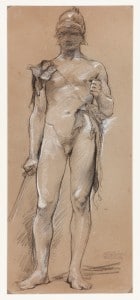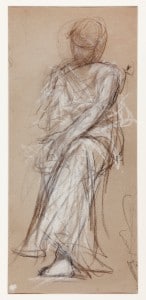Artist
Ricardo Villodas y de la Torre
(Madrid, 1846-Soria,1904)
Ricardo Villodas was born in Madrid in 1846. He began his artistic training at the Real Academia de San Fernando, where he studied with the painter Federico de Madrazo, one of the leading figures and most celebrated names in 19th-century Spanish painting. His training involved copying the works of the Old Masters in the Prado, attending classes at Eduardo Rosales’ studio, and taking part in various competitions and exhibitions. Villodas moved to Paris where he stayed for twelve years and made contact with other Spanish artists awarded State travel grants, including Raimundo de Madrazo, León Bonnat and Eduardo Zamacois. In 1876 he returned to Madrid and won several prize medals. Following these successes, he decided to go to Rome, where he remained for twenty years, maintaining close contacts with Spaniards living there, such as José Casado de Alisal and José Villegas. Within his oeuvre Villodas combined the academic discipline of history painting, the only genre that could bring artists official recognition, with the execution of smaller, cabinet paintings on a variety of themes including scenes of picturesque daily life, Orientalist subjects, and Pompeian figures. Financial difficulties obliged Villodas to return to Spain in 1888, where he secured the patronage of Alfonso XII who made him a Knight of the Order of Charles III.



